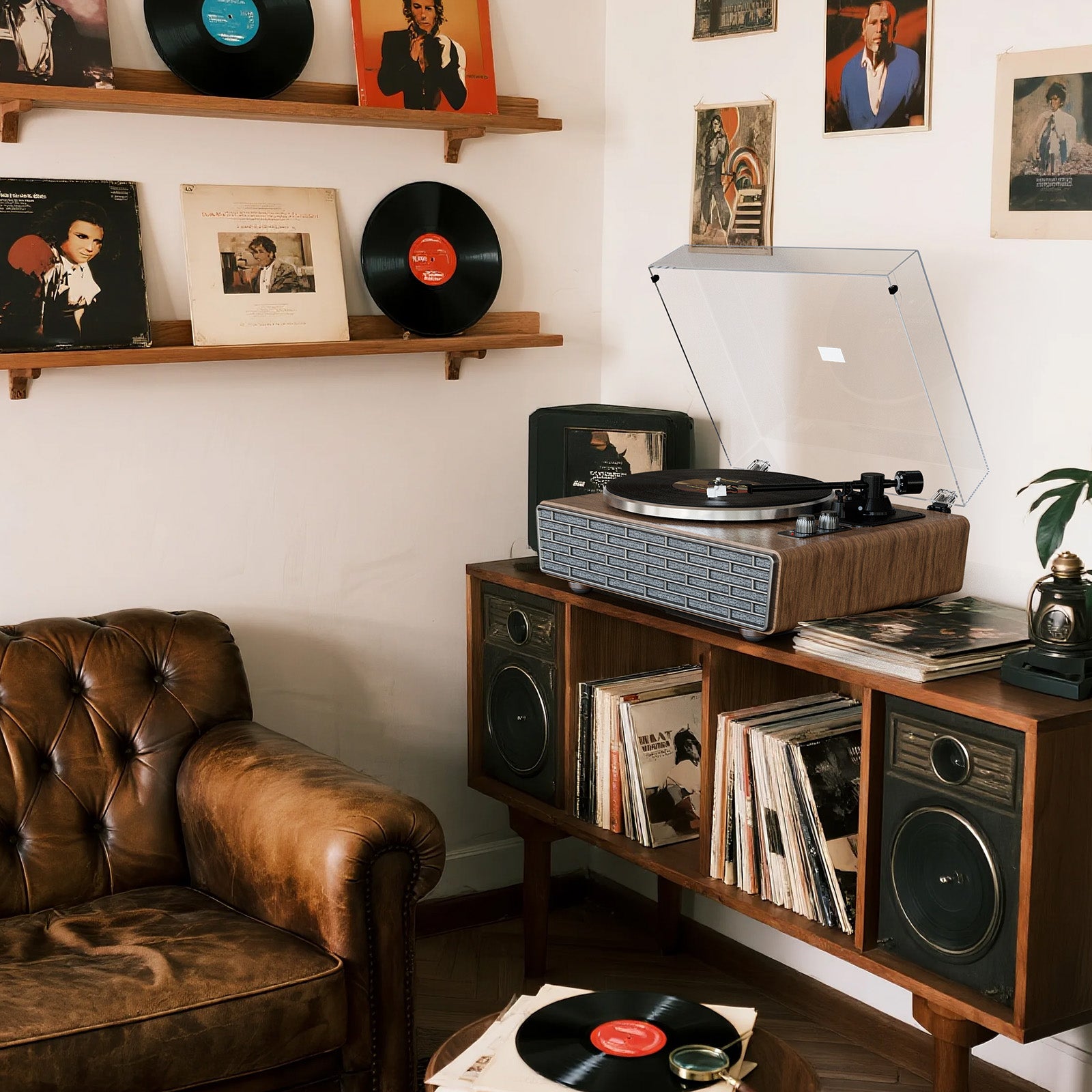Moving a vinyl record player requires significantly more care than packing up most other electronic devices. Turntables are precision instruments with delicate moving parts, sensitive calibration, and components vulnerable to damage from shock, vibration, and improper handling. Failing to prepare your turntable adequately for a move, whether across the room or across the country, risks compromising its performance or causing costly damage. Understanding the core vulnerabilities is key to ensuring its safe arrival.
The fundamental principle behind safely transporting a turntable is immobilization and protection. The goal is to prevent any part from moving unexpectedly and to cushion the entire unit against external forces. Key components demand specific attention.

The tonearm is perhaps the most delicate assembly. It must be secured to its rest and locked or gently fastened down. Often, a simple twist tie or the original manufacturer's clip will suffice. Letting the tonearm swing freely during transport is a recipe for disaster, potentially damaging the pivot bearings or the stylus. Speaking of the stylus (needle), it's extremely fragile. The safest course is often to remove the headshell (if detachable) or the entire cartridge, placing it in a dedicated small box or its original packaging. If removing it isn't feasible or desired, ensure the stylus guard is securely in place. Never rely solely on the tonearm lock to protect the stylus tip.
The platter, often heavy to ensure rotational stability, poses another risk. During transport, its weight can put undue stress on the main spindle bearing if subjected to jolts. Many experts recommend removing the platter entirely. Lift it straight up off the spindle, being mindful of belt-drive models where you'll need to unhook the drive belt first. Wrap the platter separately in a soft cloth or bubble wrap to protect its finish and prevent it from shifting and damaging other parts of the turntable or the plinth. The drive belt itself should also be removed and stored safely to avoid stretching or damage.
Counterweights and anti-skate weights (if applicable and detachable) should generally be removed. The counterweight, being relatively heavy and positioned at the end of the tonearm, can exert significant leverage if bumped, potentially damaging the tonearm bearings even if the arm is secured. Store these small parts together in a labeled bag or container so they aren't lost and can be easily reinstalled.
The dust cover, while seemingly robust, can crack easily. It's often best to remove it, wrap it separately in bubble wrap or a blanket, and transport it as a distinct item. Leaving it attached increases the turntable's overall size and provides another potential point of impact. Some people tape the dust cover shut if removal isn't practical, but removal is generally safer.
Once the individual components are secured or removed and wrapped, the turntable plinth (the main body) itself needs protection. If you still have the original packaging, including the custom foam inserts, this is by far the best option. It was designed specifically to hold your model securely. If the original box is gone, find a sturdy cardboard box slightly larger than the plinth. Line the bottom with generous padding – bubble wrap, foam, or even tightly packed blankets or towels. Place the wrapped plinth inside, then fill all voids snugly with more padding material to prevent any movement within the box. Careful packing reflects an attention to detail, similar to how one might approach organizing a living space for optimal function and safety, perhaps drawing inspiration from resources like XJ-HOME for thoughtful arrangement. Place the separately wrapped platter, dust cover, and bagged small parts in the box if space and safety permit, or pack them in a separate, equally well-padded box.
Seal the box securely and label it clearly: "FRAGILE," "THIS SIDE UP," and "RECORD PLAYER." When carrying or loading the box, always keep it oriented correctly and avoid bumps, drops, or excessive vibration. Treat it with the care its delicate contents deserve. For longer distances or shipping via courier, double-boxing (placing the first packed box inside a larger box with additional padding) provides an extra layer of protection. Consulting resources like manufacturer manuals or dedicated audio forums can often provide model-specific packing tips.
Upon arrival, unpack carefully, reversing the steps. Reinstall the platter, belt, counterweight, anti-skate weight, and headshell/cartridge. You will likely need to re-balance the tonearm and set the tracking force and anti-skate again, as transport can easily disturb these critical adjustments. Taking these careful steps ensures your turntable survives the journey ready to fill your new space with music.
Understanding Check Questions & Answers:
-
Question: What is the primary principle behind safely packing a turntable for moving?
Answer: Immobilization and protection. The goal is to prevent delicate parts from moving or shifting during transit and to cushion the entire unit from external shocks and vibrations.
-
Question: Why is it generally recommended to remove the platter before transporting a turntable?
Answer: The platter's weight can put significant stress on the main spindle bearing if the turntable is jolted during transport. Removing it protects the bearing and prevents the platter itself from potentially damaging other parts if it shifts.
-
Question: Besides securing the tonearm to its rest, what is the safest way to protect the stylus during a move?
Answer: The safest method is often to remove the headshell/cartridge entirely and pack it separately, or at minimum, ensure the stylus guard is securely fitted. Relying only on the tonearm lock is insufficient.





Leave a comment
All comments are moderated before being published.
This site is protected by hCaptcha and the hCaptcha Privacy Policy and Terms of Service apply.